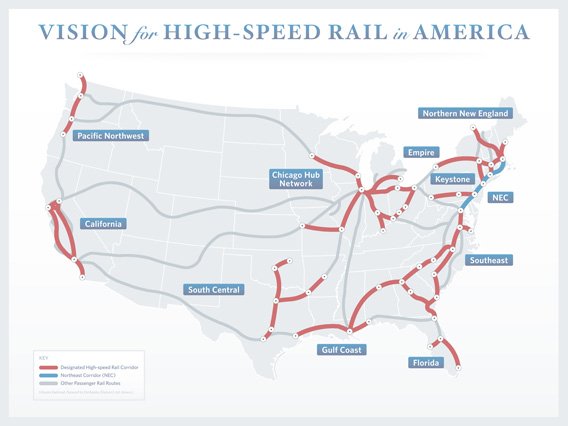Peze bouton sa si ou vle li an Kreyol
Bus and Rail
FOLLOW US:
TRANSIT AT THE TABLE Discussion and Case Studies from Volpe and FTA http://www.planning.dot.gov/Documents/tat.htm
Bus Rapid Transit (BRT)
FDOT District 4 hosted a Bus Rapid Transit (BRT) Forum on Wednesday, January 18, 2012. It included presentations from peers about their experiences in planning, constructing and operating various types of Bus Rapid Transit (BRT). The presentations can be found at the following link: http://www.nbrti.org/Broward_County_BRT_Workshop.html.
In addition, a report which profiles eight U.S. BRT systems: the Cleveland HealthLine, the Eugene EmX, the Kansas City MAX, the Los Angeles Metro Rapid system and Orange Line, the San Pablo Rapid, the Boston Silver Line, and the Las Vegas MAX, is available at the following link: http://nbrti.org/research.html
Bus
Many of our residents in Southeast Florida depend on public transportation to get to their jobs. Without our local bus services, our economy would suffer. Providing travel choices is crucial to an effective transportation system. The Broward MPO's 2035 Long Range Transportation Plan moves forward with increased investment in transit for both bus and rail, including reducing wait times between buses and adding bus rapid transit lines.
Broward County Transit (BCT), South Florida Regional Transportation Authority/Tri-Rail (SFRTA), and Miami-Dade Transit (MDT) provide bus services in Broward County and connecting Southeast Florida. In addition, Fort Lauderdale Transportation Management Association (TMA) provides a free and/or low cost bus/trolley service that circulates through downtown Fort Lauderdale. For bus routes and schedules, visit Broward County Transit (BCT), SFRTA/Tri-Rail, Miami-Dade County Transit (MDT), Sun Trolley and Palm Tran for services to the north.
For information on transportation projects that will take place over the next five years, take a look at our Transportation Improvement Program. The plan is updated annually and assigns funding to specific projects.
For information about national transit issues, visit the American Public Transportation Association (APTA).
Rail
Many our residents in Southeast Florida depend on public transportation to get to their jobs. Without Tri-Rail service, regional commutes would be virtually impossible and our regional economy would suffer. Providing travel choices is critical to maintaining an effective transportation system. Just as I-95 serves as the transportation backbone of Southeast Florida's roadway network, Tri-Rail anchors our current transit system and is connected to traditional local bus services provided by the South Florida Regional Transportation Authority/Tri-Rail (SFRTA), Broward County Transit, Miami-Dade Transit and Palm Tran. The Broward MPO and its partners are currently developing new service, similar to bus rapid transit that will link to Tri-Rail in multiple locations, including employment and business centers to the east and west of the Tri-Rail system. For information regarding Tri-Rail services including route and schedules, visit, Tri-Rail (SFRTA).
There are three main types of rail systems currently contemplated by the Broward MPO: high speed rail, commuter rail, and modern street car.
Commuter Rail
Tri-Rail (operated by the SFRTA) is our commuter rail system, which uses existing railroad tracks to connect Southeast Florida's major business centers and all three International Airports (Miami, Fort Lauderdale and Palm Beach) which are spread apart by long distances. Tri-Rail operates more frequently during peak travel times (morning and evening rush hours). Tri-Rail is the State of Florida's first commuter line. Potential expansions to the Tri-Rail system could include a northern extension to Jupiter and an eastern north-south route along the Florida East Coast Railway connecting every major coastal downtown in Southeast Florida.
Visit the official Tri-Rail (SFRTA) website.
Modern Streetcar
A modern street car system is designed for short commutes and is typically powered by overhead wires, however, new technologies have been developed that could eliminate the need for overhead wire. This modern street car system currently being planned, or the Wave, would begin a circulator system in downtown Fort Lauderdale with frequent service. Once built the Wave could be expanded to connect to Tri-Rail, the Fort Lauderdale Hollywood International Airport, Port Everglades, and Nova Southeastern University.
Visit the Wave Streetcar web-site
High Speed Rail
 |
| Click here to view full size version of map |
As the name suggests, high speed rail travels at high speeds over large distances. This type of rail is best-suited for travel between large cities.
In 2009, the federal government unveiled a new national plan for intercity passenger rail, coupled with a commitment to provide more than $13 billion in federal funding over five years. One of the high speed rail corridors identified by the federal government would potential link Southeast Florida (Miami, Fort Lauderdale and West Palm Beach) with Orlando-Disney World. This link would provide quick access for businesses and tourists to move quickly between Florida's major destinations.
For more information about High Speed Rail, visit the US National High Speed Rail Association's website.
For information on transportation projects that will take place over the next five years, take a look at our Transportation Improvement Program. The plan is updated annually and assigns funding to specific projects.
Quiet Zones Along the Florida East Coast (FEC) Railroad Corridor
The Broward MPO is working with the Florida Department of Transportation (FDOT) to develop an approach to Quiet Zones along the Florida East Coast (FEC) railroad corridor, in coordination with Broward County and the municipalities along the corridor. FDOT is conducting diagnostic reviews of the at-grade crossings on the FEC corridor to inform decision makers about possible safety improvements and Quiet Zone designations. For FDOT’s DRAFT Broward County Quiet Zones Preliminary Assessment please click the following: DRAFT Quiet Zones Preliminary Assessment